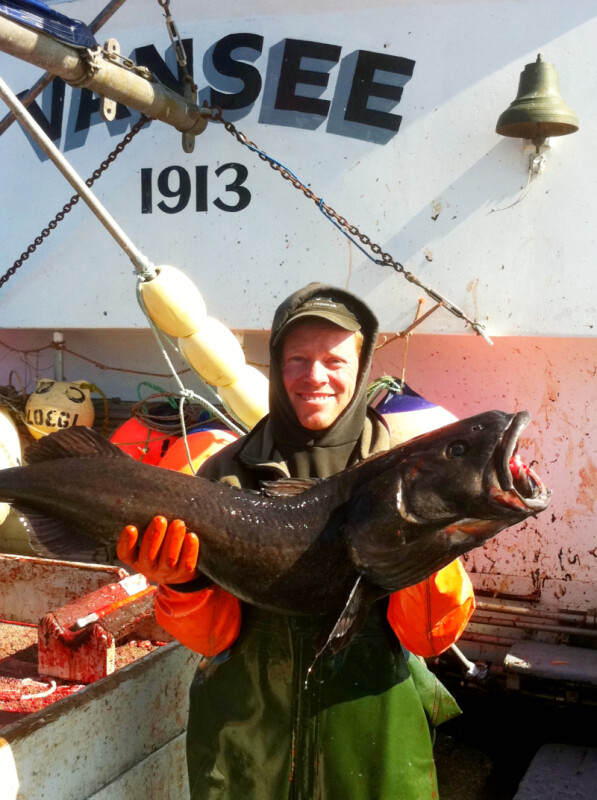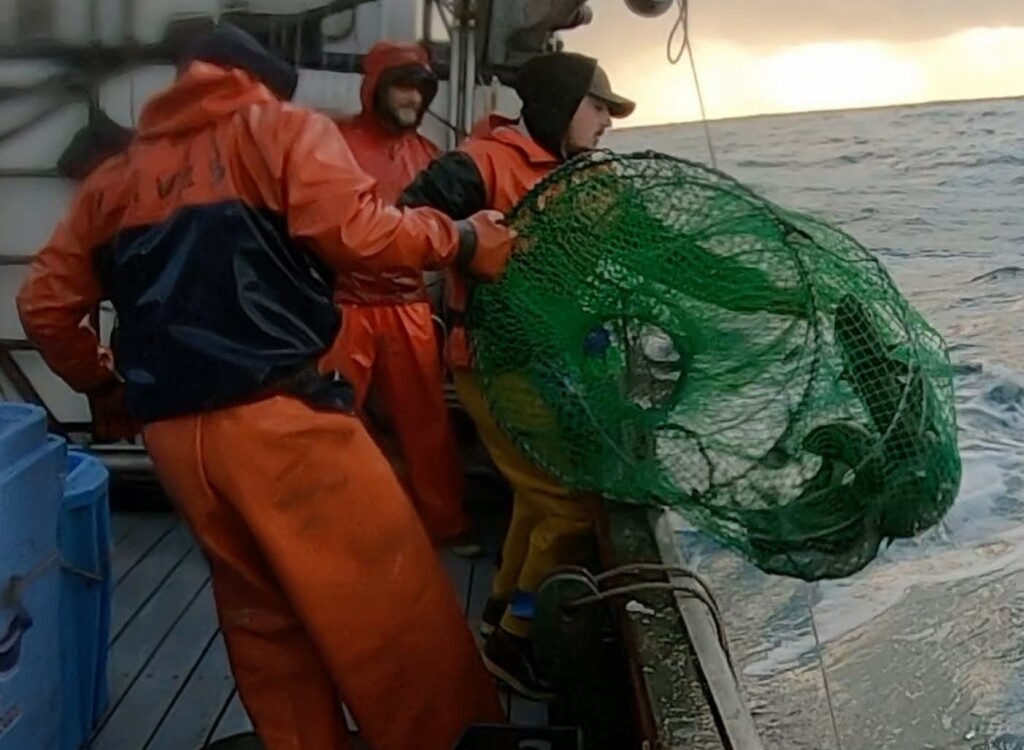When Shawn McManus, skipper of the F/V Vansee, left Seattle in the spring of 2020 to longline for blackcod in Alaska, the outlook was not good. The burgeoning pandemic had injected uncertainty into a fishery that was already struggling with flagging prices and crippling whale depredation.
On the grounds, McManus and his colleagues estimated half their catch, sometimes more, was being snatched off hooks by orcas and sperm whales. Fishermen with bigger boats and more powerful hydraulics had long ago switched to whale-proof rigid pots, but they were not an option for smaller operations like the Vansee, a 107-year-old halibut schooner with limited deck space.
In a last ditch attempt to save his season, McManus threw in 50 so-called slinky pots before he left Seattle’s Fishermen’s Terminal. To him, it was a new and virtually unknown product, a lightweight collapsible pot that would fold flat and stack on deck, giving boats like his a chance to get off hooks and into pots.
“After just trying a couple days, the writing was on the wall. We knew the only way we were going to catch all of our fish was to purchase more of these pots. We fully converted over. They’ve been a lifesaver for us, and really the entire fishery,” McManus said.

The pots had made their Alaska debut just a few months earlier in the fall of 2019 when skipper Pete Sawle saw a short video posted online by California fisherman and biologist Alexander Stubbs, who invented the slinky pot with his business partner Adam Sewall.
Sawle had 60 of the pots, dubbed CodCoil by Stubbs, shipped to Kodiak, Alaska, found they worked very well, and partnered with Stubbs and Sewall’s business Longline Pots to sell them last winter. Sawle — who runs Fish Tech out of Oregon — estimates the group has outfitted around 50 boats with the slinky pots while inspiring other fishermen to send their own manufacturing to China to make knock-offs.
It all amounts to a gear shift fishermen say is unprecedented.
“In my 40 years of fishing in Alaska, I’ve never seen a transformation like in the last year since these slinkies came online,” said veteran fisherman Buck Laukitis.
And according to McManus, the collapsible pots’ opportune arrival and rapid spread is keeping people in the blackcod business.
“I think without these slinky pots, you would have had people going out of business or selling out,” McManus said.
Part of the slinky pot’s success stems from its affordability. The pots run around $75 to $150, but fishermen can use the same ground line they use for hooks and do not need expensive new haulers or hydraulics.
Slinky pots are a hit innovation. Not so much the experiments with ropeless or so-called pop-up gear, in hopes of eliminating whale gear entanglements in California’s Dungeness crab fishery
In April, a bill in the California state Assembly to mandate pop-up gear in trap fisheries by 2025 failed to make it to the hearing stage. That was a victory for the fishing industry, which convinced lawmakers to withhold support for the measure written by Assemblyman Rob Bonta (D-Oakland) at the behest of the Center for Biological Diversity.
Fishermen will need more practical and reliable designs before they can depend on remote-controlled pop-up buoys to carry vertical lines to the surface for retrieval, said Dick Ogg, a California captain deeply involved with whale monitoring, testing pop-up designs and the California Dungeness Crab Fishing Gear Working Group.
“Our ability to travel between the pots to retrieve and redeploy is critical,” said Ogg, a 2019 National Fisherman Highliner. Just adding one minute to the cycle per crab pot in aggregate adds 5.8 hours to the workday on his boat, he calculates.
“When we’re taking that much more time, you’re telling the crew they work for the same amount of money, but it will take six more hours,” said Ogg. “Guess how that will turn out.”
At this point, Ogg says, “there is nothing on the market we can put on the boat and make it work.” The future gear needs to be stackable and easily deployed and retrieved, and he thinks designers need more hands-on experience at sea to conceive engineering solutions.
“Until you’re on the boat and see how it works, you can’t design a system,” he said.
Ogg foresees no choice but to keep trying.
“We had one confirmed Dungeness crab (gear) entanglement last year,” the only verified out of 16 reported entanglement incidents along the coast. But “we’re still accountable for all of them,” he said.
It looks like new gear requirements will be coming, “even though we’re reduced (whale interactions) to almost nothing,” said Ogg.
Pacific Marine Expo: Conference Session
Slinky Pots to Ropeless Tech • Friday, Nov. 19 • 1:50 • Main Stage







